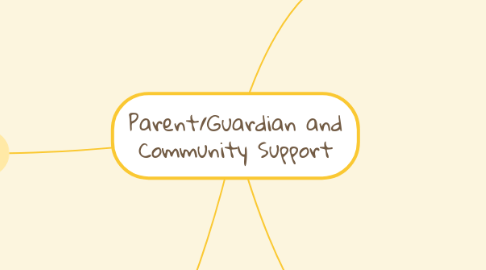
1. Guidelines
1.1. Anything goes!
1.2. No criticism or flaming allowed
1.3. The Wilder The Better
1.4. Quantity is Quality
1.5. Set a Time Limit
2. New Ideas/ Strategies
2.1. - send out bi-lingual newsletters and information sheets - provide a home-school co-ordinator or translator - encourage home visits by teachers - set up a multi-lingual telephone tree - set up monthly meetings to get parents involved - learn about different cultural ideas and values (ask for ideas from the parents to incorporate these in the classroom) - try to incorporate community in the curriculum (for example working in a cultural section to a unit) - invite extended family members to school events as well! - try to set up a calendar to best accommodate different parent schedules and cultural celebrations - find out if school provides child-care for families (especially to accommodate parental attendance at school functions) - look in to tips to help facilitate transportation for families for school functions
3. Questions I still have
3.1. 1. For ideas about working family and culture in to the curriculum- where can I look for inspiration? 2. How can I encourage other teachers to also do this, to strengthen our community? 3. How can I help family members who are resistant to participate (possibly because they are shy or self-conscious of their language abilities)? 4. What can I do if my school does not offer a translator? 5. How can I improve my own future classroom using these strategies?
4. Approaches
4.1. Traditional Approaches
4.1.1. Epstein's typology: areas where schools could improve 1) assisting families with parenting and childrearing skills 2) two-way communication about school programs and school progress 3) recruiting efforts to involve families 4) involving families with their children in learning activities at home 5) including families as participants in school decisions (through councils, etc.) 6) collaboration with resources of community-based agencies, colleges and other groups to strengthen school program
4.2. Non-traditional Approaches
4.2.1. 1) Develops reciprocal understanding of schools and families. 2) Uses school curriculum to situate cultural strengths of the family and community within the school 3) Provides parental education (includes family literacy) 4) Parental advocacy is promoted to encourage and teach parents to advocate for their child 5) Parental involvement is encouraged by instilling parent-initiated efforts at the school 6) All communication implements culturally and linguistically appropriate practices
